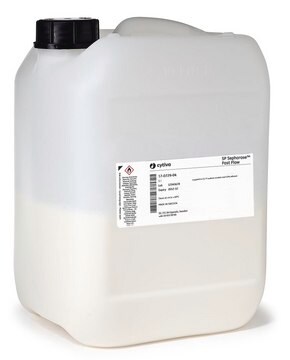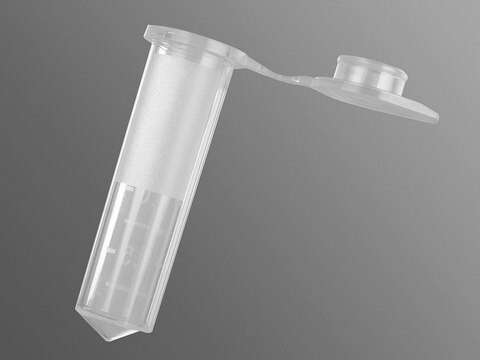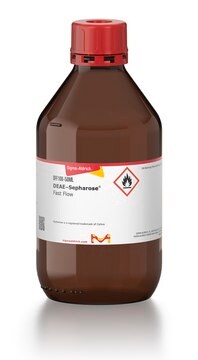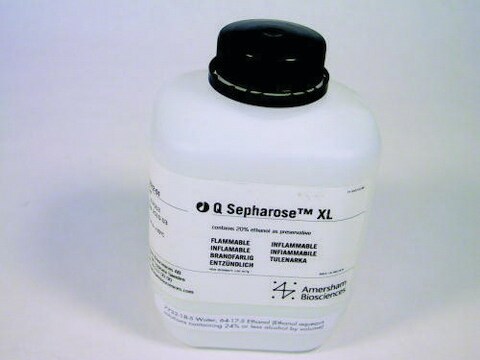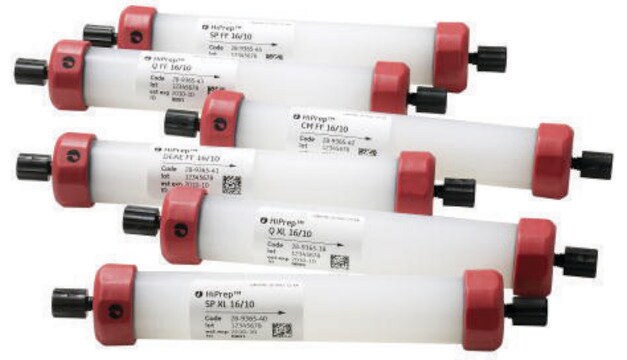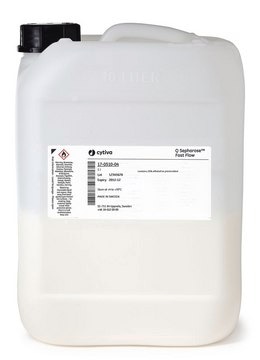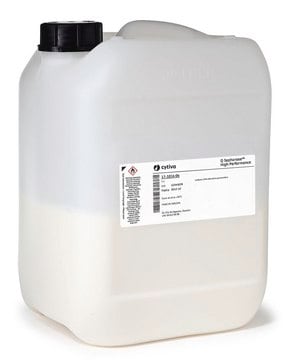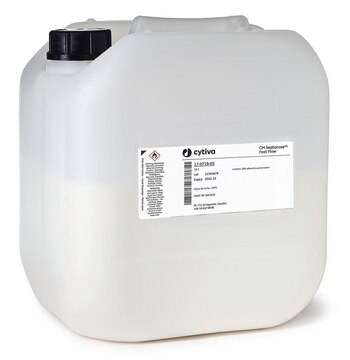Kluczowe dokumenty
S1799
SP Sepharose™
Fast Flow, aqueous ethanol suspension, 45-165 μm (wet), exclusion limit ~4,000,000 Da
Synonim(y):
Sulfopropyl-Sepharose™
About This Item
Polecane produkty
Poziom jakości
Postać
aqueous ethanol suspension
grupa aktywna macierzy
, —CH2-SO3-
wielkość cząstki
45-165 μm (wet)
wielkość porów
~4,000,000 Da exclusion limit
pojemność
180-250 μeq/mL, gel
temp. przechowywania
2-8°C
Szukasz podobnych produktów? Odwiedź Przewodnik dotyczący porównywania produktów
Zastosowanie
Postać fizyczna
Informacje prawne
Hasło ostrzegawcze
Warning
Zwroty wskazujące rodzaj zagrożenia
Zwroty wskazujące środki ostrożności
Klasyfikacja zagrożeń
Flam. Liq. 3
Kod klasy składowania
3 - Flammable liquids
Klasa zagrożenia wodnego (WGK)
WGK 1
Temperatura zapłonu (°F)
100.4 - 109.4 °F
Temperatura zapłonu (°C)
38 - 43 °C
Certyfikaty analizy (CoA)
Poszukaj Certyfikaty analizy (CoA), wpisując numer partii/serii produktów. Numery serii i partii można znaleźć na etykiecie produktu po słowach „seria” lub „partia”.
Masz już ten produkt?
Dokumenty związane z niedawno zakupionymi produktami zostały zamieszczone w Bibliotece dokumentów.
Klienci oglądali również te produkty
Nasz zespół naukowców ma doświadczenie we wszystkich obszarach badań, w tym w naukach przyrodniczych, materiałoznawstwie, syntezie chemicznej, chromatografii, analityce i wielu innych dziedzinach.
Skontaktuj się z zespołem ds. pomocy technicznej


